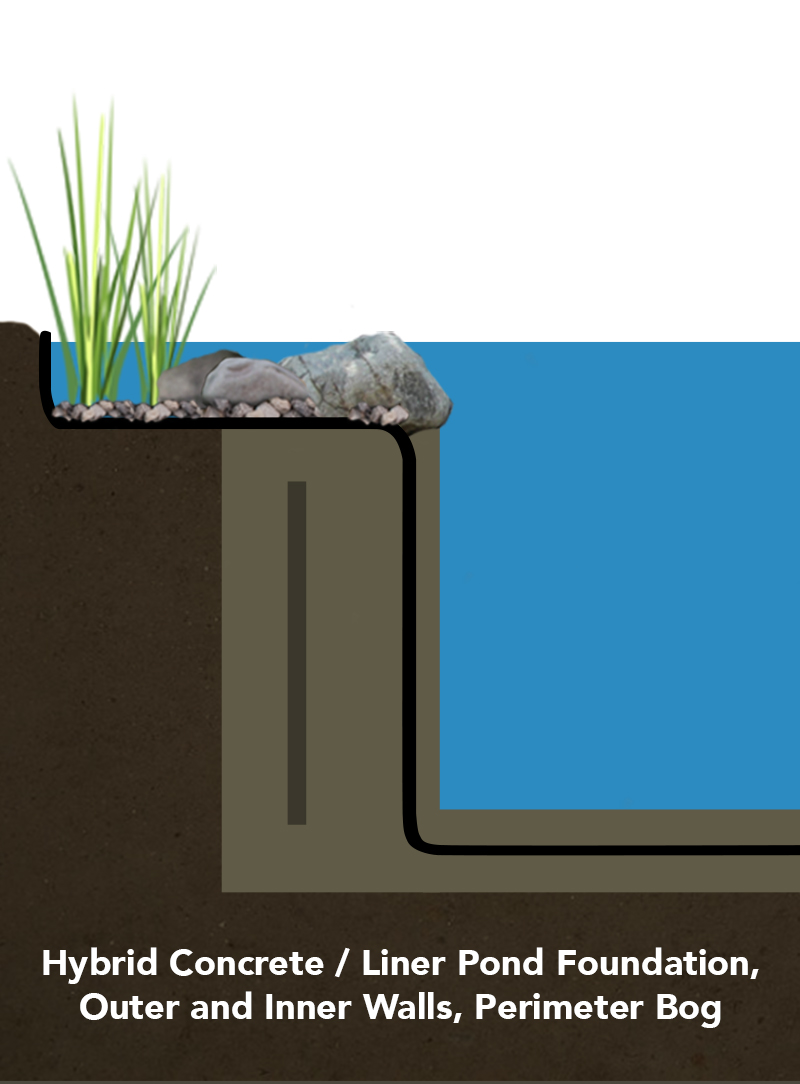Ponds 103
Chapter 3
Bog Construction

Installation of perimeter bogs is simple with the RSVP profile we are using as an illustration, since all you have to do is widen the Rock Shelf to accommodate a bog behind the coping stones, but in general bogs are easy to install around any pond. All you need is a shallow, planted gravel bed connected to the pond. The 8” depth of the Rock Shelf is a perfect depth for a bog, shallow enough to be easy to clean if ever necessary. The area of the bog or bogs should be at least 10% of the total surface area of the pond, up to 30% if you plan on a lot of fish. Bogs will be easiest to maintain if they run along the edge of the pond without being very wide, maybe 1-3 feet wide at the most. If you want a passive bog, simply fill the extra wide area outside the coping rocks with gravel, ensuring that the liner is secured higher than the water level at the outside edge of the bog. Water will seep through the coping rocks into the gravel. For an active bog place a perforated pipe under the gravel and actively feed 500-1000 gph into the pipe, which will flow up through the gravel and roots, through the coping stones and back into the pond, screened, cleaned and nitrate-free. For more information check out Natural Filtration in the College of Filtration.




